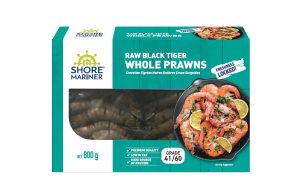There are many advantages to choosing ShoreMarinerNZ frozen seafood. These benefits include increased shelf life, lower environmental impact, and easier transport. Frozen fish is also more affordable than fresh fish and healthier.
Increased shelf life
The shelf life of frozen seafood is an important issue for food manufacturers and consumers. As the world’s population grows, the demand for healthy and fresh foods has increased. Consumers expect a balance between price and quality.
 The shelf life of fish results from various factors such as storage temperature, treatment methods, and the biochemical properties of the fish. It is essential to ensure that the product stays as fresh as possible.
The shelf life of fish results from various factors such as storage temperature, treatment methods, and the biochemical properties of the fish. It is essential to ensure that the product stays as fresh as possible.
Frozen fish is usually stored under refrigeration. However, there are other ways to preserve and extend its shelf life. These include vacuum packaging, edible films, and modified atmosphere packaging.
Freezing is the most effective preservation method. However, it causes dehydration and nutrient loss. During freezing, ice crystals form and crush the cell walls of the product, increasing degradative reactions. Fish becomes a dull colour, and the flesh becomes yellowish.
Several authors have developed methods to increase the shelf life of frozen fish. For example, a skin packaging method has been used to extend the shelf life of seafood by ten times. Using edible films can also inhibit the growth of microorganisms and prevent freezer burn. Using vacuum packaging can reduce drip loss and minimize moisture loss.
Some studies have also shown that irradiation can cause unwanted changes in fish. It can alter the structure of proteins and increase the permeability of cells. It can have negative consequences for human health.
Some studies have used sensory scoring to estimate the quality deterioration of frozen seafood. It is important to use reliable kinetic models to calculate the effect of temperature on food quality.
There is a need for improved cold chain management and effective shelf-life prediction models. In improving these, it is critical to understand the effects of packaging materials and preservation methods. Various studies have been conducted to determine the effectiveness of the various techniques.
Currently, refrigeration is the most common method of preserving seafood. However, this can be costly. Many companies are considering alternative methods of preserving the product.
Moreover, consumers prefer seafood products that are packaged in a way that reduces bacterial growth and maintains the freshness of the product. Food producers should therefore take steps to increase the shelf life of their products.
Healthier than fresh fish
Frozen seafood is a great alternative to fresh fish. It is also an environmentally friendly way to enjoy your favourite fish varieties.
The freezing process also extends the shelf life of your fish. It makes frozen seafood more affordable than fresh.
The best part is, frozen fish can be enjoyed any time of year. You can store it in your freezer for up to a month or even a year. When you’re ready to eat, pull it out, warm it up, and savour it.
While frozen fish may not be as good as freshly caught fish, it is still healthy and nutritious. It contains high amounts of lean protein and omega-3 fatty acids. These nutrients have been shown to reduce the risk of heart disease and help lower blood pressure.
Fish is a healthy alternative to meat and can be a great addition to your diet. Eating it three or four times a week is a smart strategy.
If you are considering buying frozen seafood, check with a reputable company. Buying seafood from an organic, sustainable source can be the best way. A local grocery store like MOM’s Organic Market in Rockville, Maryland, is committed to sourcing sustainably sourced and produced seafood.
Fresh seafood can cost as much as 20 percent more than frozen, but it also has a higher carbon footprint. According to the Johns Hopkins Center for a Livable Future, 16% of edible seafood goes bad in the United States annually.
Unlike other food products, the freezing process preserves most nutrients. Water-soluble vitamins and minerals can be lost during the thawing and defrosting processes, but the fat and proteins are left untouched.
The benefits of freezing your fish include preserving its flavour and quality. Frozen seafood is also safe and convenient. Having the option to pull the fish out when you want is a great way to enjoy your favourite varieties.
The best research has yet to be conducted regarding the health benefits of eating frozen fish, but chefs agree that the process is healthy and tastes just as good.
Easier to transport than fresh fish
Fresh fish can be hard to handle. It is also susceptible to bacterial contamination. If you want to avoid this problem, it is best to purchase frozen fish.
While this may sound counterintuitive, frozen fish is easier to transport than fresh fish. You can buy frozen seafood all over the world. Using a refrigerated truck to ship it can prevent spoilage and help maintain its freshness.
Another reason to consider frozen fish is that it is cheaper. A typical fish package will cost about 20% less than its fresh counterpart. Frozen seafood can be purchased in bulk and is a good choice for home cooks.